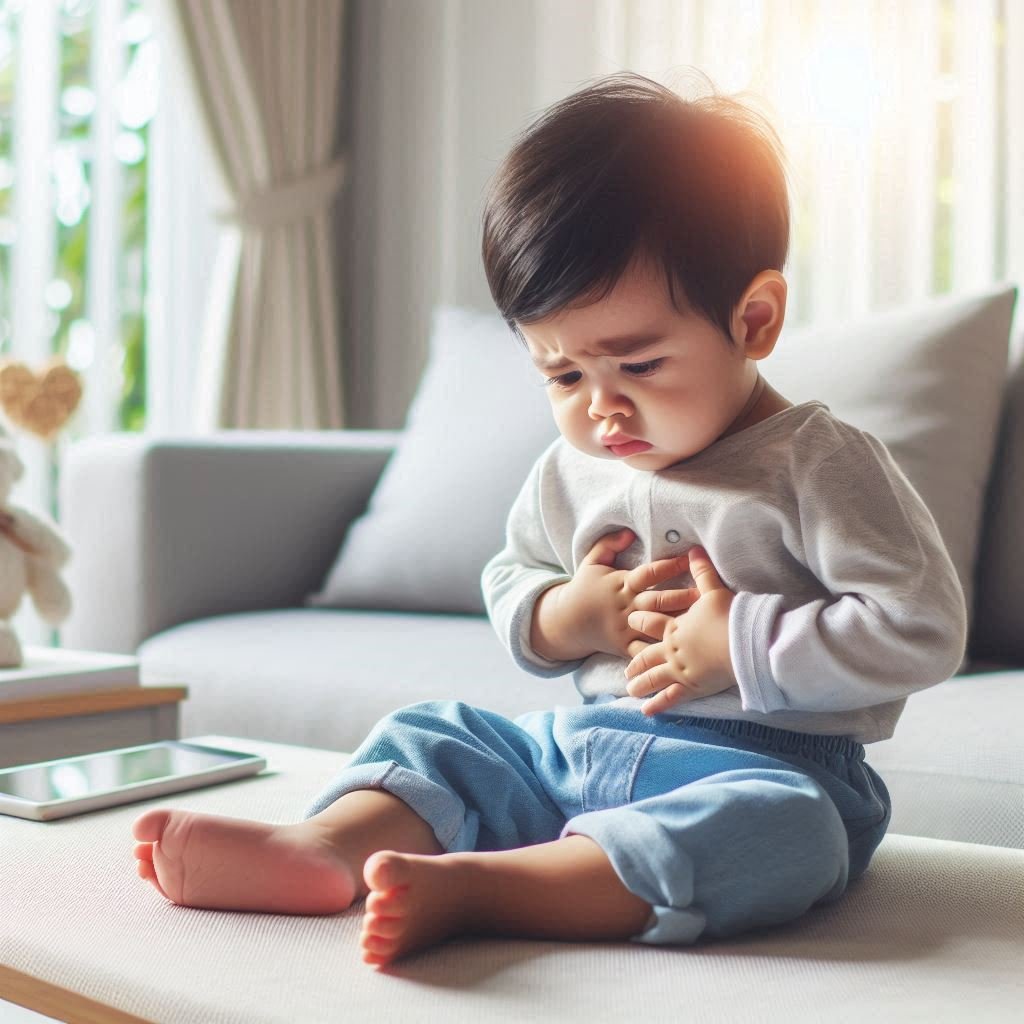
Chest pain isn’t just a problem for adults. It may occur in a child as well. It rarely is due to cardiac disease. Chest pain is the presenting complaint in 6 per 1,000 children. Chest pain has a variety of sources, and virtually any structure in the chest can cause pain. This includes the lungs, the ribs, the chest wall muscles, the diaphragm, and the joints between the ribs and breastbone. Injury, infection, or irritation to any of these tissues can be responsible for chest pain. The most common source of chest pain in children is “musculo-skeletal “. The chest wall has many ribs and each of these ribs attach to the sternum or breastbone in the front of the chest by means of joints. Each rib also has three sets of muscles associated with it.
There are some rare noncardiac reasons for chest pain. These include Sickle cell anemia, Pneumothorax, pneumonia, asthma and very rarely chest tumors such as lymphomas. Cardiac disease is a rare cause of chest pain in children. Children who have severe, persistent cough, asthma, or pneumonia may complain of chest pain due to overuse of chest wall muscles. Some children may complain of chest pain with exercise due to exercise-induced asthma. Stress or anxiety can precipitate chest pain in both boys and girls. Gastroesophageal reflux disorder is more likely to happen if your child’s been lying down. Injury to the muscles and bones of the chest wall can have many causes. Some are obvious such as a direct blow during a sporting event or a fall. Other less obvious causes include heavy lifting.
Acid reflux can cause stomach or chest pain. It sometimes manifests as a burning sensation below the sternum. Chest pain that can be accompanied by an irregular heart rhythm or pounding, dizziness, that is made worse by exercising, and that may cause fainting. Heat and an anti-inflammatory medicine, such as ibuprofen, may help relieve symptoms. Do not give aspirin to your child without consulting your doctor first. Apply local heat for 20 minutes 4 times a day. Use a heating pad or warm washcloth to the area.Daily, gentle stretching exercises of the shoulders and chest wall in sets of 10 twice daily can prevent recurrence of these chest pains. Stretching exercises can be continued even during active chest pain. Avoid any that increase the pain.
Chest Pain In Children Treatment and Prevention Tips:
1. Apply local heat for 20 minutes 4 times a day.
2. Use a heating pad or warm washcloth to the area.
3. Stretching exercises can be continued even during active chest pain.
4. An anti-inflammatory medicine, such as ibuprofen, may help relieve symptoms.
5. Do not give aspirin to your child.




